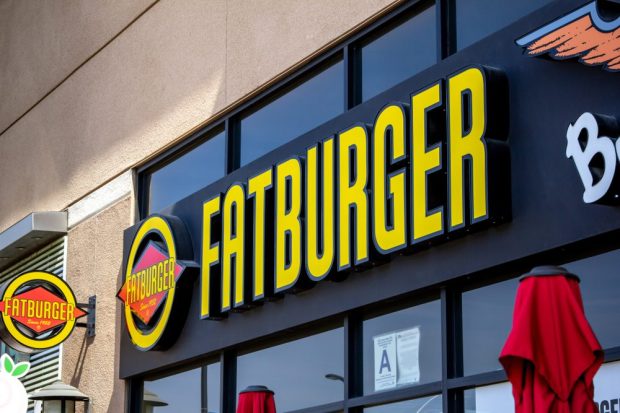Fatburger Opens Triple-Chain Location to Reap Co-Branding Sales Boost

Restaurant group FAT Brands’ new tri-branded locations have been driving sales and boosting margins.
In an interview with PYMNTS discussing the company’s first tri-branded location, featuring fast-casual concepts Fatburger, Buffalo’s Express and Hot Dog on a Stick, Mason Wiederhorn, chief brand officer of the company, which spans more than 2,300 locations worldwide, spoke to the benefits of the model.
“It is a great model from both a menu and margins perspective,” Wiederhorn said. “On average, we look to see an increase in incremental sales of 10-20% from adding a brand so numbers certainly play a role, but it also comes down to the identity of the brands and if we see synergies there.”
For instance, at this tri-branded location, he argued that burgers, wings and hot dogs tend to work well together, with fans of one brand often open to trying out another. Additionally, he noted that the model is helpful in the company’s franchising efforts, giving operators an easy way to add more concepts to their stores.
Strategies for Co-Branding Success
Wiederhorn noted that to make the locations work, it is key for the brands to operate within the same model — that is, if one brand is fast-casual, the others must be as well. Consequently, the company has created a fast-casual spinoff of its Buffalo’s Café, Buffalo’s Express, to work with the other brands in the location.
Additionally, he said that these locations work best when they have “an anchor brand,” with the others proving supplementary to the main concept. For instance, Fatburger is in the foreground in the tri-branded location, with the other two functioning in support.
“This provides balance and does not overwhelm the customer,” said Wiederhorn.
The additional sales these brands provide are much-needed, with many restaurant customers reevaluating their spending.
Research from the August edition of PYMNTS’ Consumer Inflation Sentiment study, “Consumer Inflation Sentiment: Inflation Slowly Ebbs, but Consumer Outlook Remains Gloomy,” which draws from a survey of more than 2,100 U.S. consumers, revealed that, in response to inflation, 78% of consumers are eating at home more. Plus, 38% reported they are opting more for lower-priced restaurants.
Get the study: Consumer Inflation Sentiment: Inflation Slowly Ebbs, but Consumer Outlook Remains Gloomy
The Connected Future of Co-branding
In the next year, the company expects to open more co-branded locations and to digitally link these brands more. In addition to encouraging cross-concept social media engagement, the restaurant group is also looking to unify the online experience, possibly bringing this strategy into the digital world.
Such efforts can be key to reaching the roughly half of all consumers who engage with restaurants online. According to data from the latest edition of the ConnectedEconomy™ study, The ConnectedEconomy™ Monthly Report: The Gender Divide, for which PYMNTS surveyed more than 2,600 U.S. consumers, 54% of men and 47% of women engage with restaurant brands digitally.
Read the report: The ConnectedEconomy™ Monthly Report: The Gender Divide
“We are working towards launching cohesive ordering platforms in early 2023,” Wiederhorn said. “Once in place, we are excited to stand up dedicated virtual storefronts on third party delivery platforms.”
